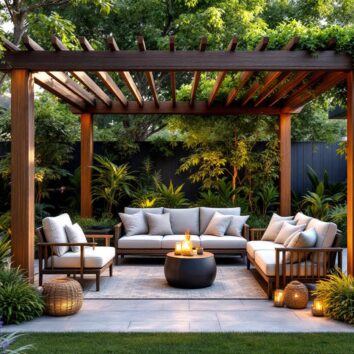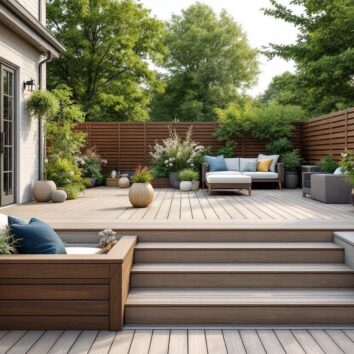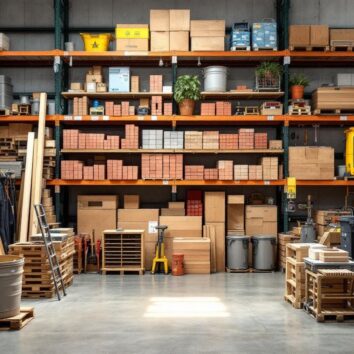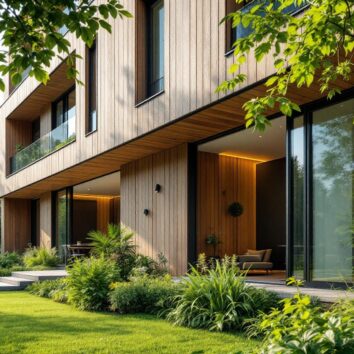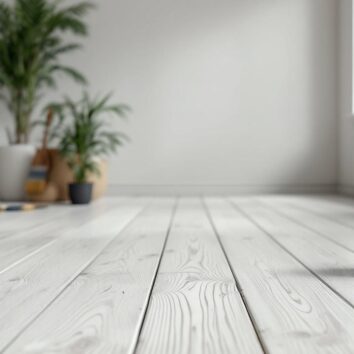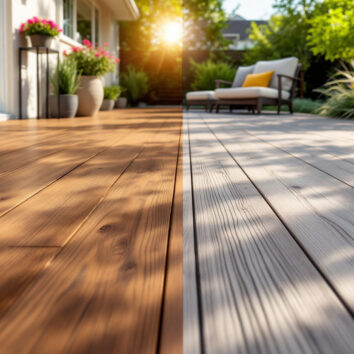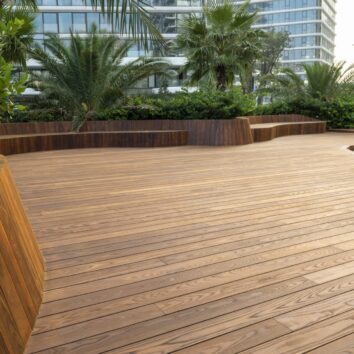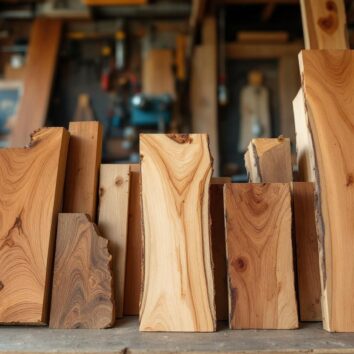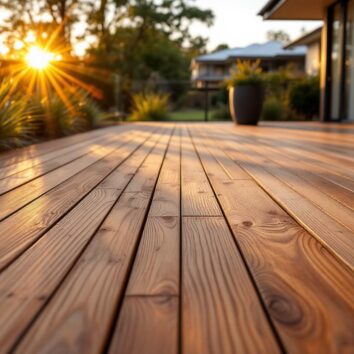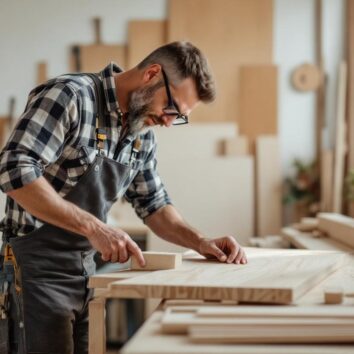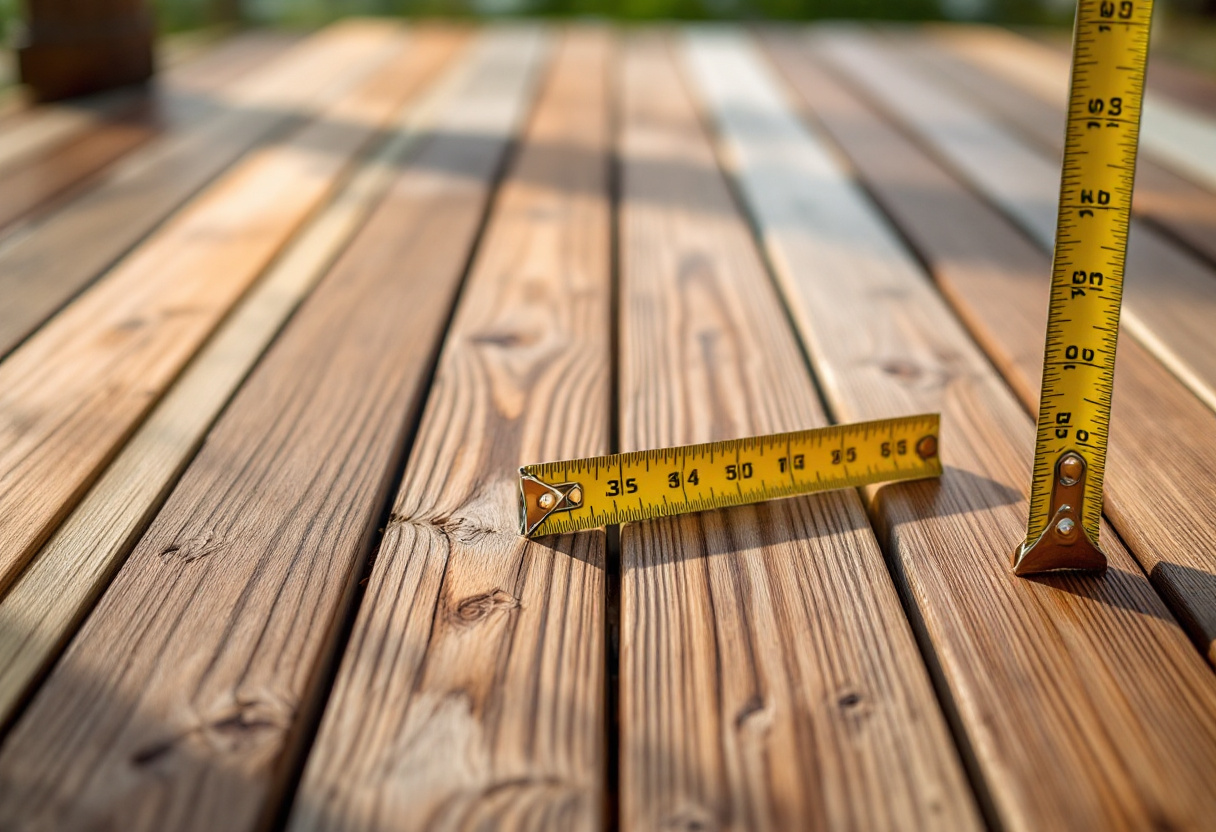
Introduction to Decking Costs in Australia
Building a deck is a popular way to enhance outdoor living spaces across Australian homes. Whether it’s for entertaining guests, relaxing with family, or increasing property value, decking offers both functional and aesthetic benefits. However, understanding the cost per square metre (m²) is crucial for budgeting and making informed decisions.
Decking costs can vary widely depending on materials, labour, design complexity, and location. This article explores the key factors influencing decking costs per m², helping homeowners and builders in Australia plan their projects effectively.
One of the primary factors affecting decking costs is the choice of materials. Timber, composite, and PVC decking each come with their own price points and maintenance requirements. For instance, while natural timber may provide a classic look and feel, it often requires regular maintenance to prevent rot and weathering. On the other hand, composite materials, made from a blend of wood fibers and recycled plastics, offer durability and low maintenance, but can come at a higher upfront cost. Understanding the long-term implications of each material can help homeowners make a more informed choice that aligns with their budget and lifestyle.
Additionally, the complexity of the deck design can significantly influence overall costs. Simple, rectangular decks are generally less expensive to build than multi-level or uniquely shaped structures that require more intricate planning and skilled labor. Features such as built-in seating, railings, and lighting can also add to the total expense. Homeowners should consider their intended use of the deck and how these features might enhance their outdoor experience, balancing aesthetics with practicality and budget constraints.
Key Factors Influencing Decking Cost Per m²
Material Selection
The choice of decking material is one of the most significant factors affecting the overall cost. Common options in Australia include timber, composite decking, and fibre cement sheeting. Each material has unique characteristics, durability, maintenance needs, and price points.
Timber Decking: Timber remains a favourite for its natural look and versatility. Pine timber, in particular, is widely used due to its affordability, availability, and ease of workability. Pine timber products are available across Western Australia and other states, making them a cost-effective choice for many projects.
For example, pine is generally cheaper than hardwoods like Jarrah or Merbau but offers sufficient strength and durability for most residential decks. Treated pine can last over 40 years above ground, providing excellent value for money when properly maintained. Additionally, the aesthetic appeal of timber can significantly enhance the overall look of a property, making it a popular choice among homeowners looking to boost their home's curb appeal.
On the other hand, composite decking has gained popularity due to its low maintenance requirements and resistance to fading, staining, and scratching. Made from a blend of recycled wood fibers and plastic, composite materials can mimic the appearance of wood while offering enhanced durability. Although the initial investment may be higher, the long-term savings on maintenance and repairs can make composite decking a wise financial choice for many homeowners.
Labour and Installation
Labour costs can vary depending on the complexity of the deck design, site accessibility, and the experience of the builder. Simple rectangular decks with straightforward installation will cost less per m² compared to multi-level or curved designs requiring advanced carpentry skills.
In Australia, labour rates fluctuate by region, with metropolitan areas like Perth and Sydney typically commanding higher rates than rural locations. Engaging experienced timber suppliers and installers can ensure quality workmanship, potentially reducing long-term maintenance costs. Moreover, skilled builders can offer valuable insights during the installation process, helping to avoid common pitfalls that could lead to additional expenses down the line.
It’s also worth considering the timing of your project. Seasonal fluctuations can affect labour availability and costs, with peak seasons often resulting in higher rates. Planning your deck installation during off-peak times may yield cost savings and allow for more flexibility in scheduling.
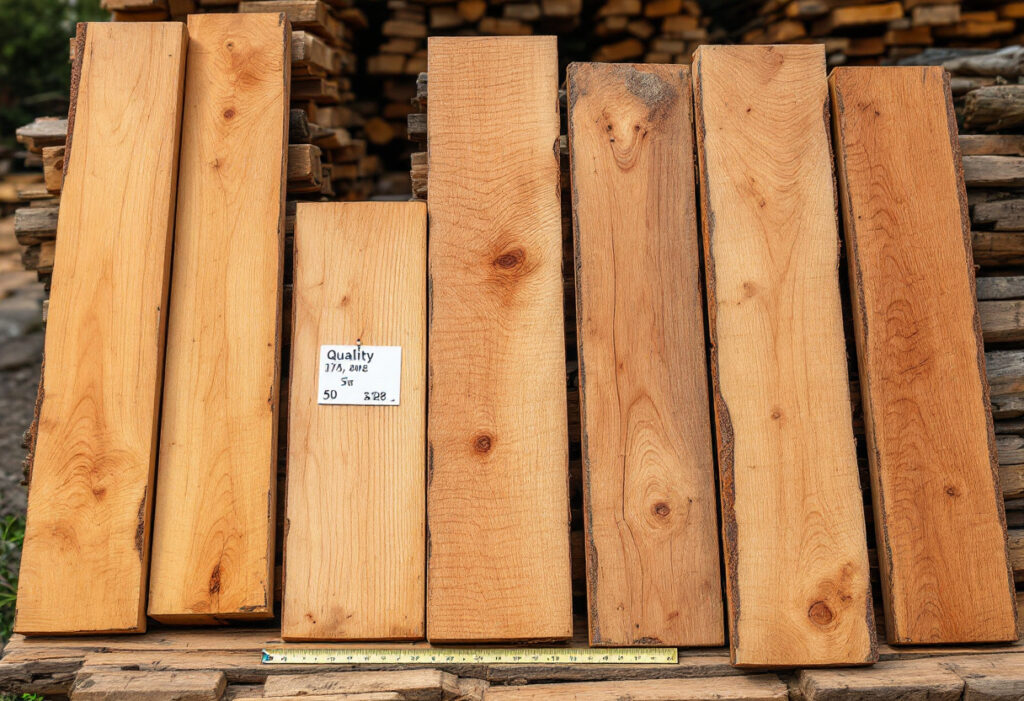
Design and Size of the Deck
The size of the deck directly impacts the total cost. Larger decks benefit from economies of scale, often reducing the cost per m². However, intricate designs with features such as built-in seating, pergolas, or lighting will increase both material and labour expenses.
Planning a deck that complements the home’s architecture while meeting lifestyle needs is essential. Consulting with timber suppliers and builders can provide insights into cost-effective design choices. Furthermore, considering how the deck will be used can influence its design; for instance, a deck intended for entertaining may require additional space and features, whereas a smaller deck may suffice for quiet relaxation.
Incorporating sustainable design principles, such as maximizing natural light and airflow, can also enhance the deck's functionality and comfort. This approach not only improves the overall aesthetic but can also lead to energy savings in the home, making it a smart investment in the long run.
Additional Components and Finishes
Costs can also increase with the inclusion of railings, stairs, skirting boards, and protective finishes. Timber mouldings and skirting boards add a polished look but come at an additional cost. Protective coatings like stains or sealants prolong the life of timber decks, especially in harsh Australian climates.
Choosing pre-oiled or treated timber products can reduce maintenance frequency and costs. For example, treated pine timber is popular for outdoor applications due to its resistance to decay and termites. Additionally, integrating features such as built-in lighting or decorative railings can elevate the deck's functionality and aesthetic appeal, but these enhancements will also contribute to the overall budget.
Moreover, the choice of finishes can greatly influence the longevity and appearance of the deck. Opting for high-quality, UV-resistant stains can help maintain the timber's natural beauty while protecting it from the elements. Homeowners should also consider the environmental impact of their choices; selecting eco-friendly finishes can not only be beneficial for the planet but may also enhance the deck's appeal to potential buyers in the future.
Material Cost Breakdown: Timber vs Composite vs Fibre Cement
Pine Timber Decking
Pine timber is one of the most economical decking materials available in Australia. Its fast growth rate and widespread availability contribute to its affordability. Pine timber products, such as those supplied by Western Australian companies, offer a range of options including treated, untreated, and primed pine.
Typical costs for pine decking materials range from $50 to $90 per m², depending on treatment and grade. Treated pine is preferred for outdoor decks due to its enhanced durability.
Advantages of pine include its lightweight nature, ease of machining, and pleasant natural aroma. It is also versatile, used in framing, flooring, and panelling, making it a popular choice for integrated decking projects.
Composite Decking
Composite decking is made from a blend of wood fibres and plastic, offering a low-maintenance alternative to timber. Although it comes at a higher upfront cost, typically between $100 and $150 per m², composite decking requires less upkeep and resists weathering, rot, and insect damage.
Composite materials are ideal for homeowners seeking durability and modern aesthetics without the need for regular staining or sealing. They also come in a variety of colours and textures, mimicking natural wood.
Fibre Cement Sheeting
Fibre cement sheeting is less common for decking but is sometimes used for decking substructures or cladding. It offers excellent resistance to moisture and fire but is generally more expensive and less visually appealing as a decking surface.
Costs for fibre cement sheeting can range from $80 to $130 per m² depending on thickness and finish. It is often combined with timber or composite decking for structural purposes.
Labour and Installation Cost Considerations
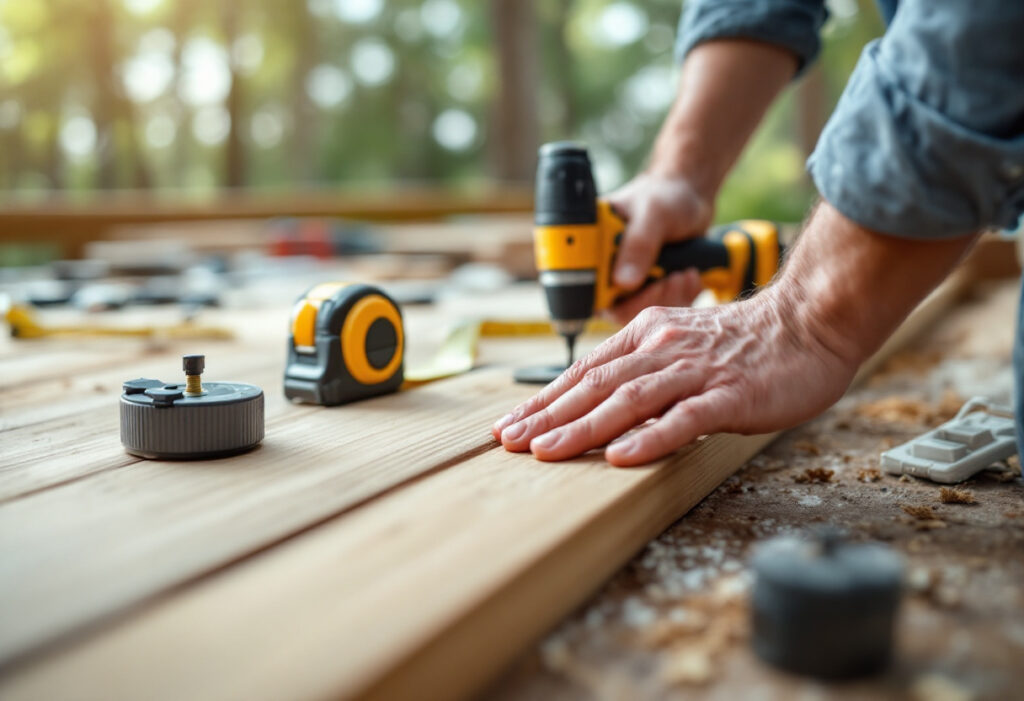
Labour costs for decking installation in Australia typically range from $40 to $70 per m², influenced by factors such as deck complexity, site conditions, and regional labour rates. For example, a simple deck installation in a suburban Perth home may cost less than a multi-tiered deck in a remote area requiring additional logistics.
Maintenance and Longevity Impact on Cost
While initial costs are important, considering the long-term maintenance and lifespan of decking materials is essential for true cost assessment. Pine timber, when untreated, may last 5 to 10 years outdoors but treated pine can last 10 to 15 years or more with proper care.
Composite decking offers longer lifespans with minimal maintenance, often exceeding 25 years. However, the higher upfront cost may not suit all budgets.
Regular maintenance of timber decks, including sealing, staining, and cleaning, can prevent rot and insect damage, extending the deck’s life and preserving its appearance.
Budgeting Tips for Australian Homeowners
Plan with Accurate Measurements
Calculate the total decking area accurately to avoid under or overestimating material needs. Remember to include stairs, landings, and any additional features in your measurements.
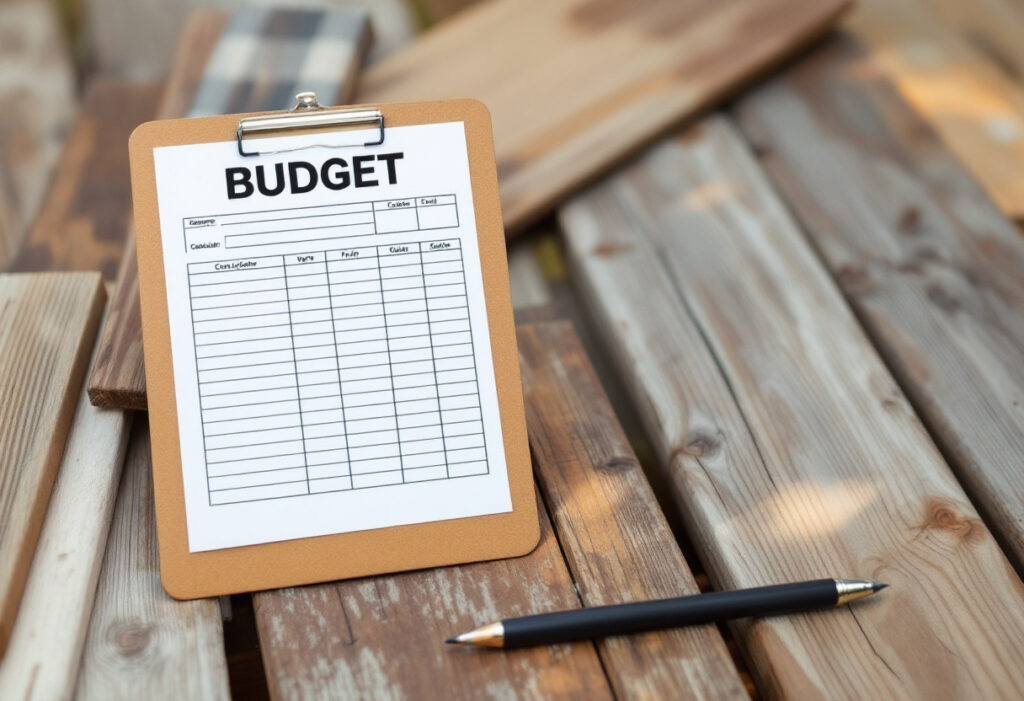
Choose Materials Wisely
Balance aesthetics, durability, and budget. Pine timber offers a cost-effective and versatile option for many Australian homes, especially when sourced from reputable suppliers with treated options available.
Get Multiple Quotes
Obtain quotes from several suppliers and installers to compare prices and services. Check for local suppliers in Western Australia or your region to reduce delivery costs and support local businesses.
Consider DIY for Simple Projects
If you have carpentry skills, installing a simple pine deck yourself can save on labour costs. However, complex designs or large projects are best left to professionals.
Factor in Ongoing Maintenance
Include the cost of sealants, stains, and periodic repairs in your budget. Treated pine timber reduces maintenance frequency, offering better long-term value.



































